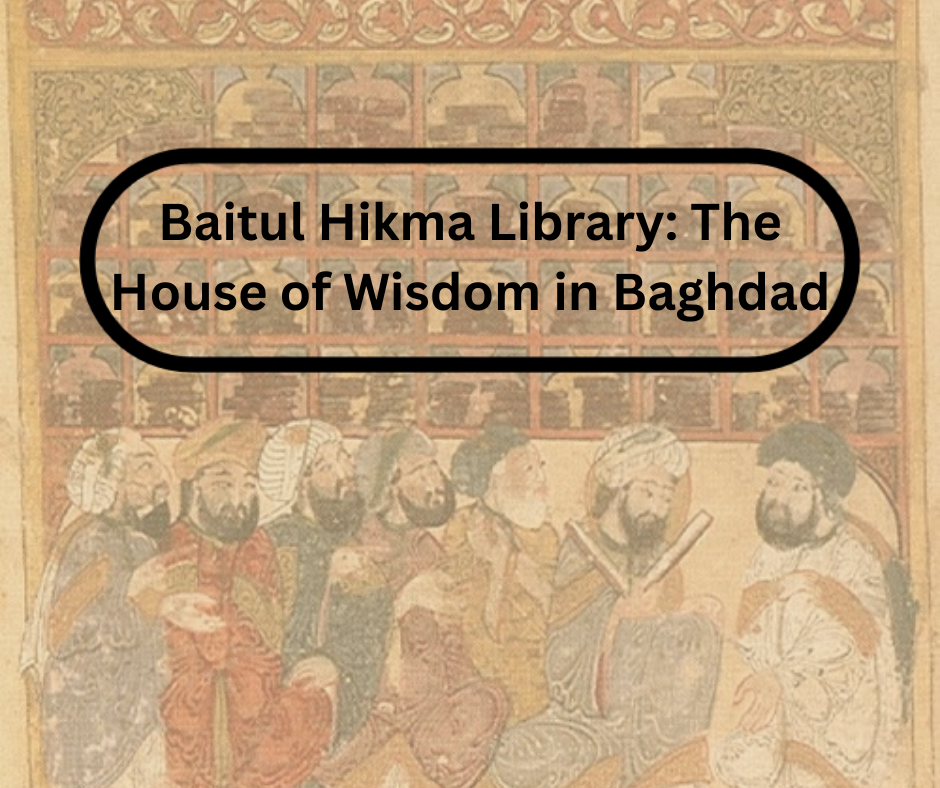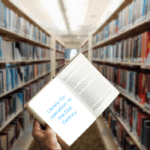The Abbasid period (750–1258 AD) is regarded as one of the most intellectually vibrant eras in world history. During this golden age, the city of Baghdad emerged as a global center of knowledge, culture, and scholarship. Many Abbasid caliphs were passionate patrons of learning who actively supported the collection, preservation, and translation of ancient and contemporary works. Their efforts led to the establishment of one of the most celebrated institutions of medieval scholarship—the Baitul Hikma, or House of Wisdom.
Origins and Founding Baitul Hikma Library
The foundation of this remarkable intellectual center can be traced back to the reign of Caliph al-Mansur (754–775 AD), the founder of Baghdad itself. Al-Mansur was not only a ruler but also a learned scholar with a deep interest in science, astronomy, and literature. During his reign, Islamic knowledge expanded rapidly, and scholars began to gather texts from Greece, Persia, India, and other civilizations.
The first formal library of the Abbasid dynasty was established by Caliph Harun al-Rashid (786–809 AD), who founded a library known as Bait al-Hukuma (House of Government). This collection served as both a royal archive and a repository of scientific and literary works. Later, his son Caliph al-Ma’mun (813–833 AD) expanded and reorganized it into a full-fledged academy of learning known as the Baitul Hikma library(House of Wisdom).

Purpose and Function of Baitul Hikma Library
The Baitul Hikma libraryhad two major purposes:
- Preservation and Translation of Knowledge: It served as a central institution for collecting and translating works from different civilizations—Greek, Persian, Indian, and Syriac—into Arabic.
- Promotion and Practice of Knowledge: The House of Wisdom was not just a library; it was also an active center for research, discussion, and education at a time when formal universities did not yet exist. Scholars gathered here to exchange ideas, conduct experiments, and develop new theories in various fields of science and philosophy.
Thus, Baitul Hikma library functioned as a library, translation bureau, academy, and observatory—all in one.
Collection of Books
The method of acquiring books for the Baitul Hikma library was both extensive and systematic. The Abbasid caliphs sent emissaries and scholars to distant lands to collect rare manuscripts and invite foreign scholars to Baghdad.
Caliph al-Ma’mun, in particular, is known to have sent representatives to Byzantine Emperor Leo V to obtain Greek works on philosophy, mathematics, and science. In return, he provided gold and diplomatic favors. This exchange led to the arrival of many precious manuscripts in Baghdad, forming the backbone of the library’s collection.
Subjects and Contents of Baitul Hikma Library
The subjects of the Baitul Hikma’s collection covered a vast range of disciplines, including:
- Philosophy and Logic
- Mathematics and Geometry
- Astronomy and Mechanics
- Medicine and Pharmacy
- Music and Literature
- Geography and Engineering
- Ancient Arabian poetry, treaties, and documents
Many of these works were translated into Arabic, enriching Islamic intellectual life and creating a new synthesis of knowledge that influenced later European scholarship.
Famous Scribes and Scholars of Baitul Hikma Library
The House of Wisdom attracted some of the greatest minds of the Islamic Golden Age, who worked as translators, researchers, and writers.
- Al-Khwarizmi (c. 780–850 AD):
Regarded as one of the greatest mathematicians of all time, Al-Khwarizmi worked in the Baitul Hikma library under Caliph al-Ma’mun. He wrote several books on arithmetic, algebra, and astronomy. His works introduced the concept of “al-jabr,” from which the term algebra is derived, and his name gave rise to the term algorithm. Al-Khwarizmi also served as the chief librarian of the House of Wisdom. - Hunayn ibn Ishaq (808–873 AD):
A leading physician, philosopher, and translator of Greek and Syriac works, Hunayn was one of the most productive translators in history. He translated the works of Hippocrates, Galen, and Aristotle into Arabic. It is said that for each of his translated works, Caliph al-Ma’mun rewarded him with gold equal to the book’s weight. He reportedly earned 500 dinars per month—an enormous sum for the time.
Librarians and Administrators
During the reign of Harun al-Rashid, the chief librarian of Baitul Hikma library was Fazl ibn Nawbakht, a Persian scholar who came from a family of astrologers and intellectuals. Later, scholars such as Sahl ibn Harun, Saeed ibn Harun, and Salam succeeded him as librarians. These positions were highly prestigious and often reserved for the most respected scholars of the empire.
Their role went beyond simply organizing books; they supervised translations, managed scholars, and coordinated the acquisition of new works. In many ways, the librarians of Baitul Hikma libraryacted as directors of an early research institute.
The Observatory and Scientific Research
Attached to the library was a large observatory, where scientists conducted astronomical observations and mathematical experiments. This was one of the earliest examples of a state-sponsored scientific institution in history. The scholars of Baitul Hikma librarymade significant contributions to astronomy, cartography, and mechanics, refining ancient theories and introducing innovative models.
Destruction of the Library
The glorious age of the House of Wisdom came to a tragic end in 1258 AD, when Hülegü Khan, the Mongol ruler and grandson of Genghis Khan, invaded Baghdad. The Mongol forces destroyed the city’s cultural centers, including the magnificent Baitul Hikma.
According to chroniclers, the books were thrown into the Tigris River, and the ink from the manuscripts turned the waters black for days. Countless scientific and literary treasures—many of them unique—were lost forever. This event marked the end of Baghdad’s intellectual supremacy and a devastating loss for world civilization.
Legacy of the Baitul Hikma
Despite its destruction, the legacy of the Baitul Hikma library endures. It symbolizes the spirit of intellectual curiosity, cultural exchange, and scientific advancement that defined the Islamic Golden Age. The knowledge preserved and translated there laid the foundations for later developments in mathematics, astronomy, medicine, and philosophy—eventually influencing the European Renaissance.
The House of Wisdom stands as a timeless reminder that knowledge knows no boundaries of nation, religion, or language. It was the beacon of human intellect that illuminated not only the Islamic world but the entire course of global civilization.
Conclusion
In summary, the Baitul Hikma library of Baghdad was far more than a library—it was the heart of a civilization’s intellectual life. Under the visionary patronage of the Abbasid caliphs, it nurtured scholars, preserved ancient wisdom, and generated new knowledge that changed the course of history. Even in ruins, its memory continues to inspire the pursuit of learning and the preservation of human thought.



